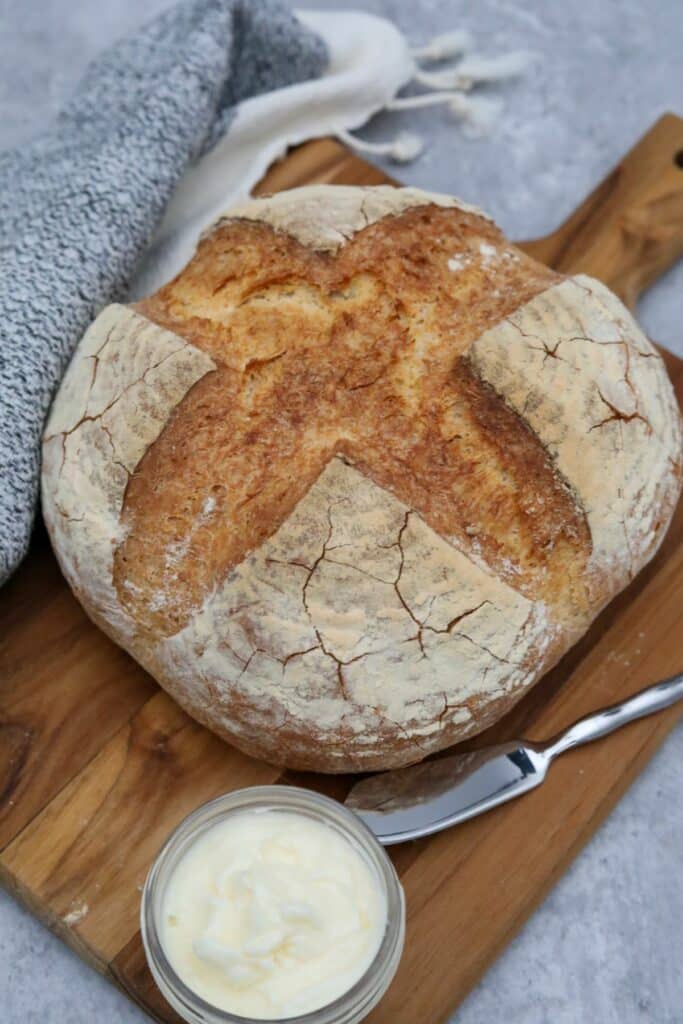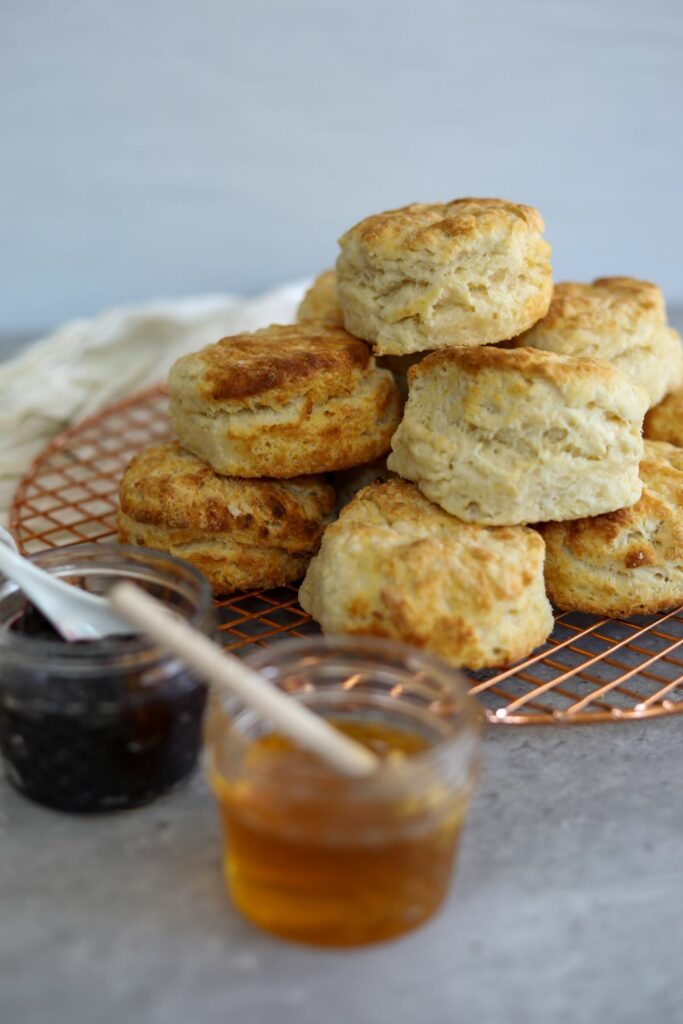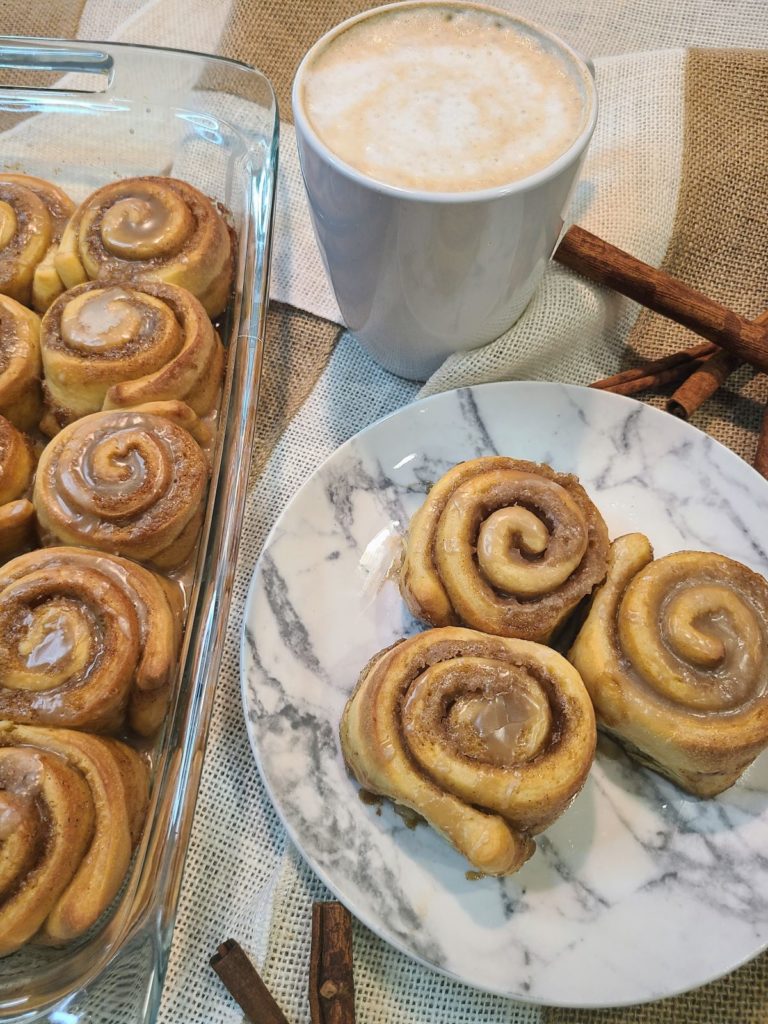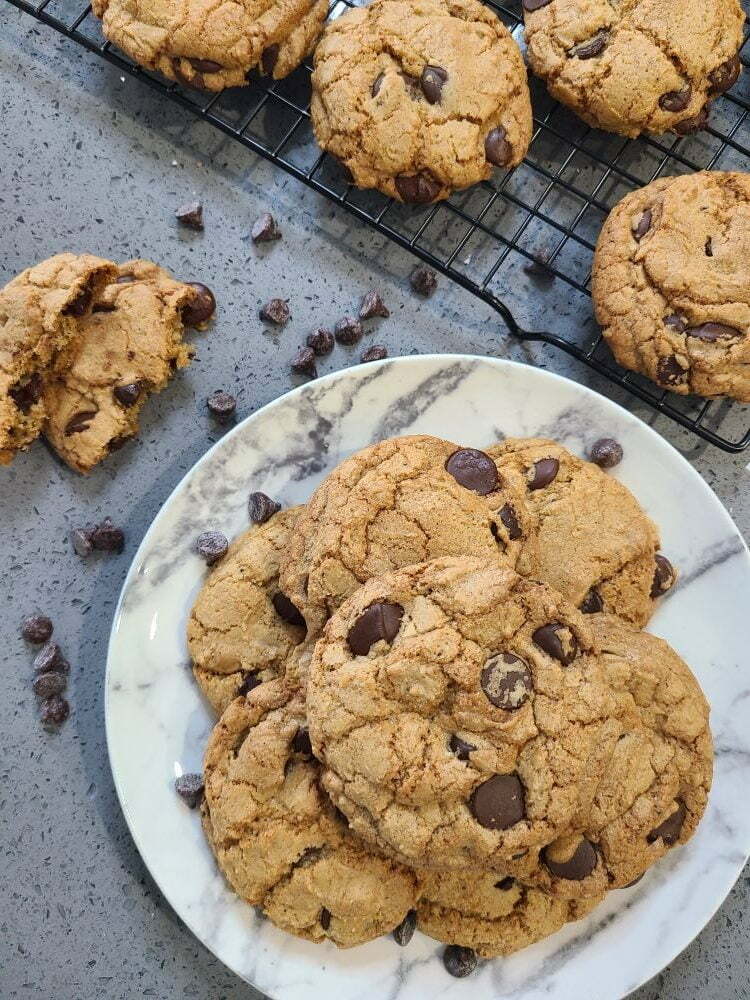This rustic crusty French loaf is the perfect bread for sandwiches, croutons or a great slice of toast. With just a few ingredients this is a great all around loaf of bread.
This is a great recipe as an introduction to bread making. As a matter of fact this was one of the very first loaves of bread I have ever made. I love it so much that it has become one of my default loaves. If you are looking to try your hand at a great loaf of bread that is fairly straight-forward then look no further. There are only 4 ingredients in this recipe which makes this bread tolerant to all kinds of additions. If you like seeds or grians in your bread then add them without hesistation.
In this recipe
This recipe has only 4 ingredients. This makes it easy to throw together as long as you have some yeast.
Flour: Bread flour has a higher protein percentage than all-purpose flour. This will give you a loaf with a tighter crumb, the part that isn’t the crust, than all-purpose flour making it a little more chewy. Both can be used for this recipe depending on how you would like the texture of your bread.
Yeast: This is going to provide the rise to the bread. You want to use instant or active dry yeast for this recipe. Also you want to make sure that the yeast is fresh as it will not rise if it isn’t fresh.
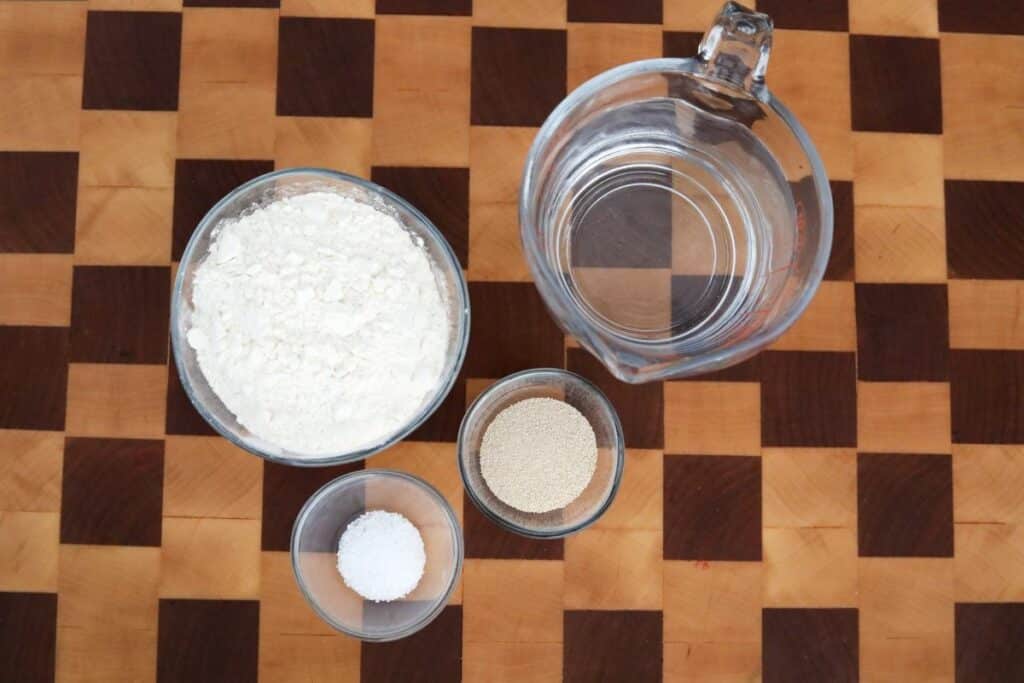
-
Save
Flour: Bread flour has a higher protein percentage than all-purpose flour. This will give you a loaf with a tighter crumb, the part that isn’t the crust, than all-purpose flour making it a little more chewy. Both can be used for this recipe depending on how you would like the texture of your bread.
Yeast: It is good to activate the yeast prior to baking. This recipe does not have any sugar in it. Instead all of the ingredients will be mixed together. The rise may take a little longer than expected.
Making the dough
There might be a point in time where the mixture looks really dry and shaggy, this is ok. Keep mixing and the dough will pull itself together. Don’t add extra water at this point although it looks like the dough needs it. It will mess up the ratios needed to give you a good rise later. This can take up to 5 minutes of mixing before it pulls away from the sides. This is the dough telling you it is ready to ferment/rise.
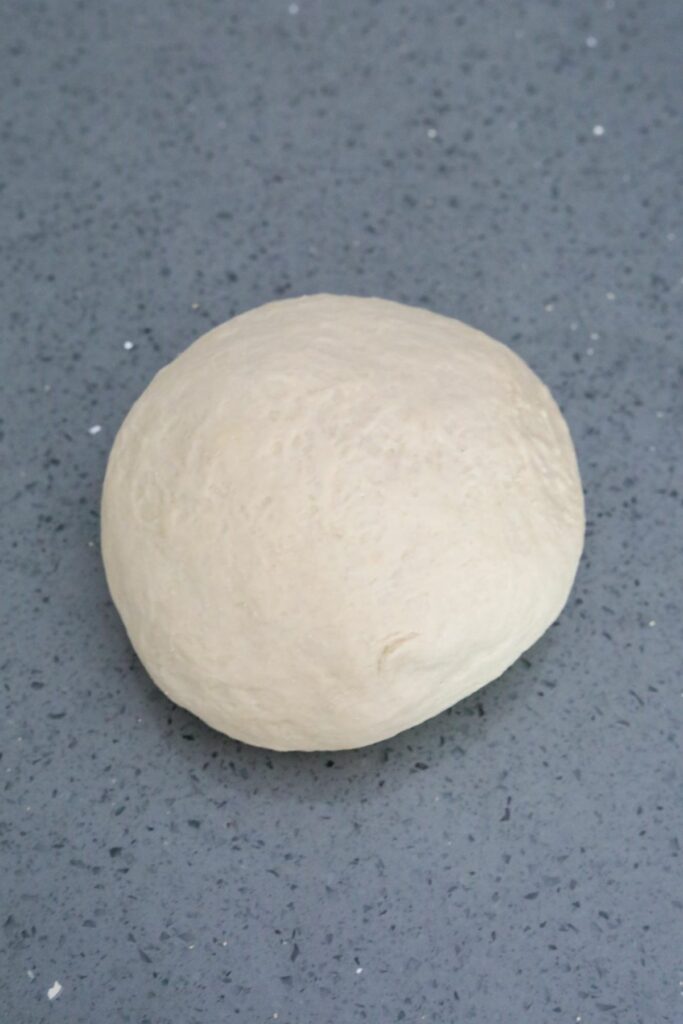
-
Save
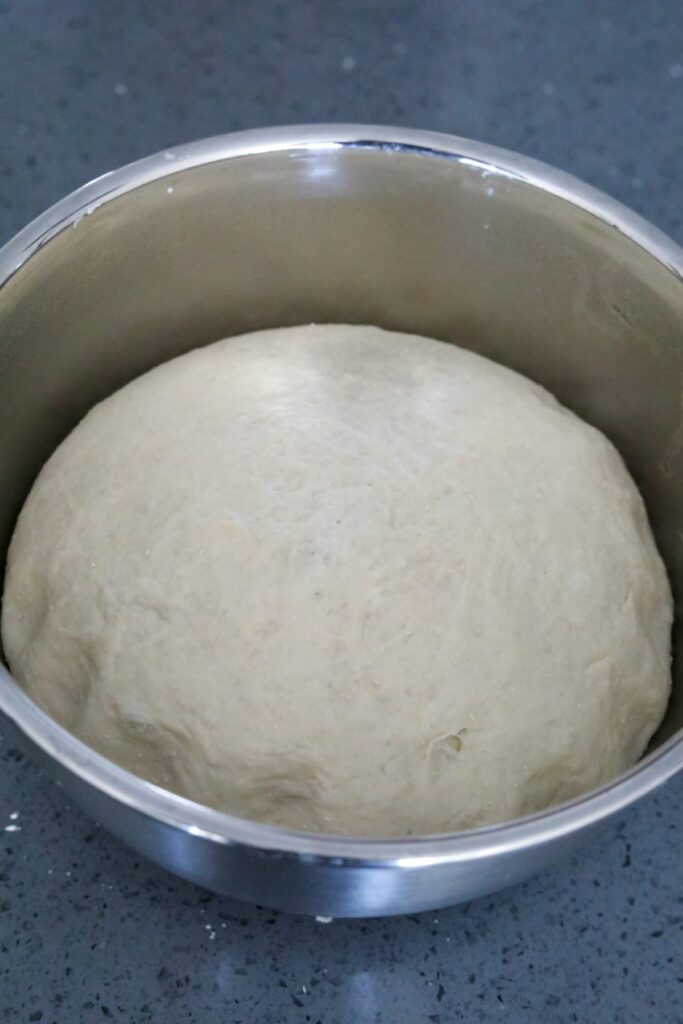
-
Save
Stretching and shaping
By stretching and folding the sides of the dough like this it helps build the structure of the dough to keep it’s round shape when cooking. Completing the entire round of dough then put the seam side on the counter. Tug the dough ball towards you an inch or so. Repeating this at least 3 more times after rotating will get you a nice round ball for the 2nd rise.
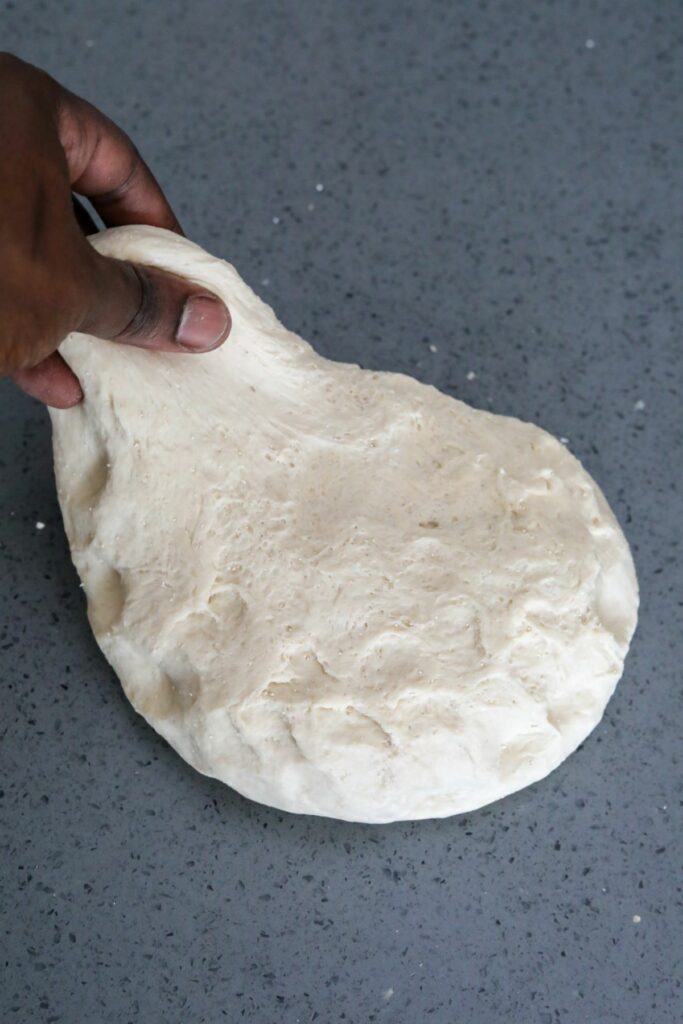
-
Save
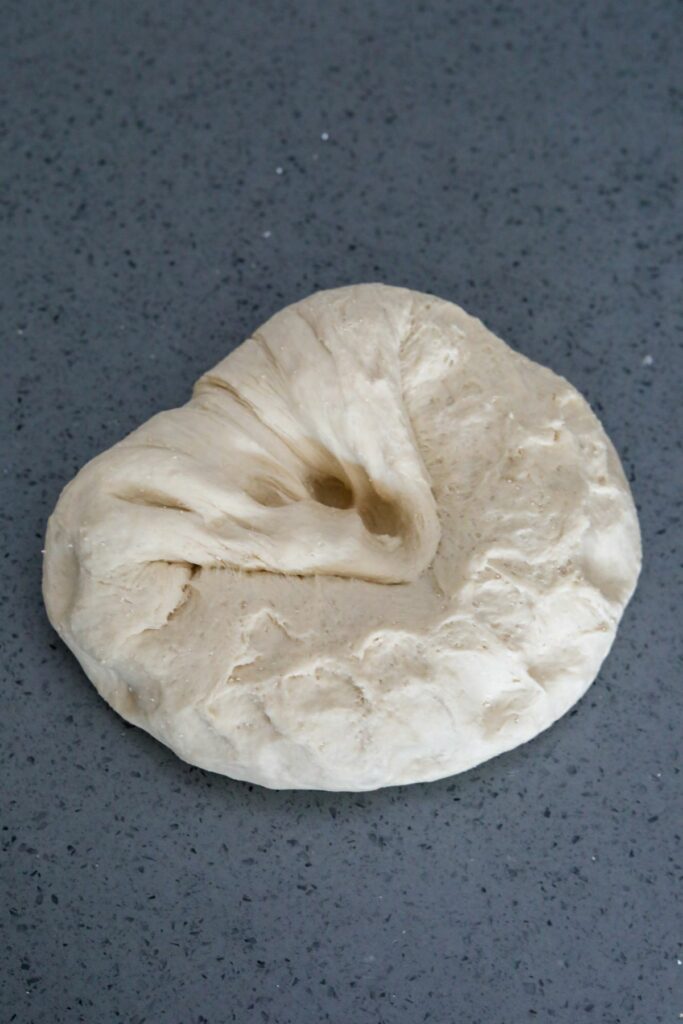
-
Save
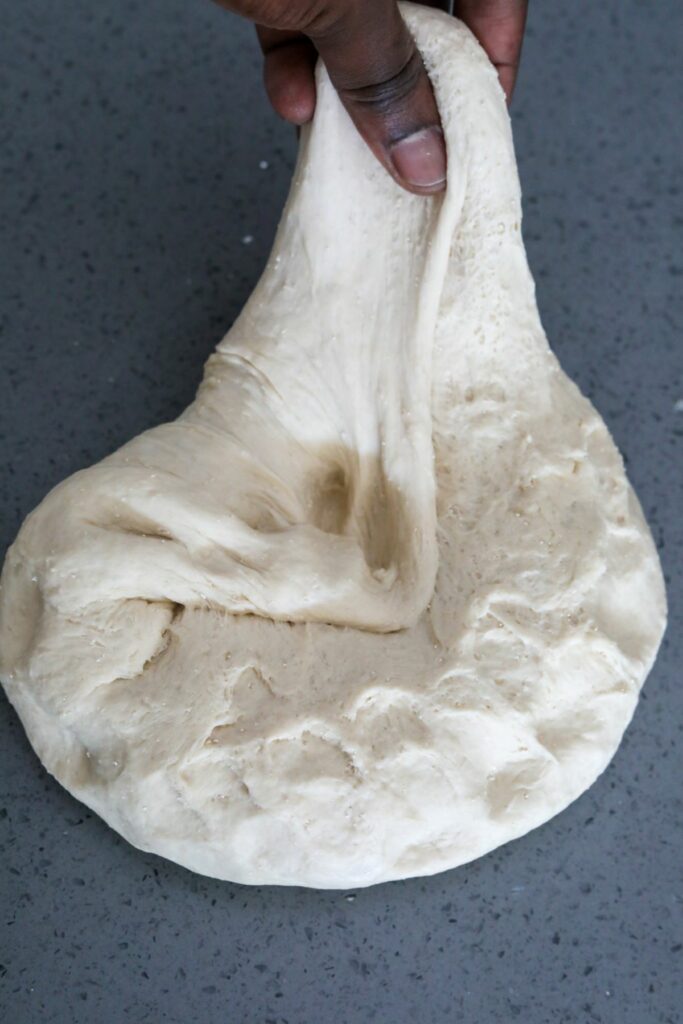
-
Save
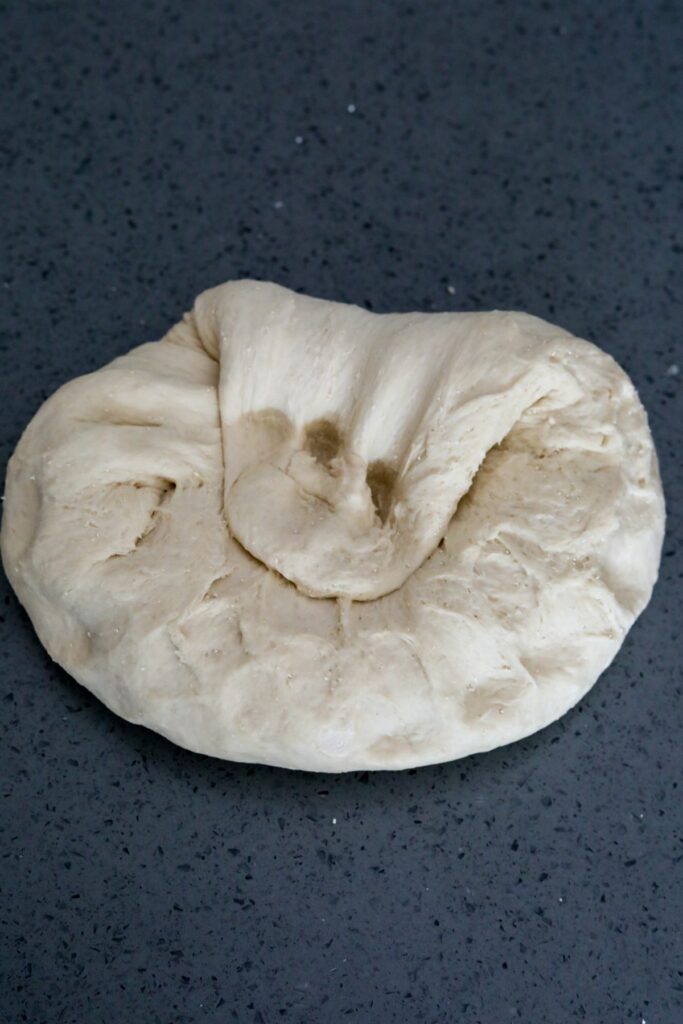
-
Save
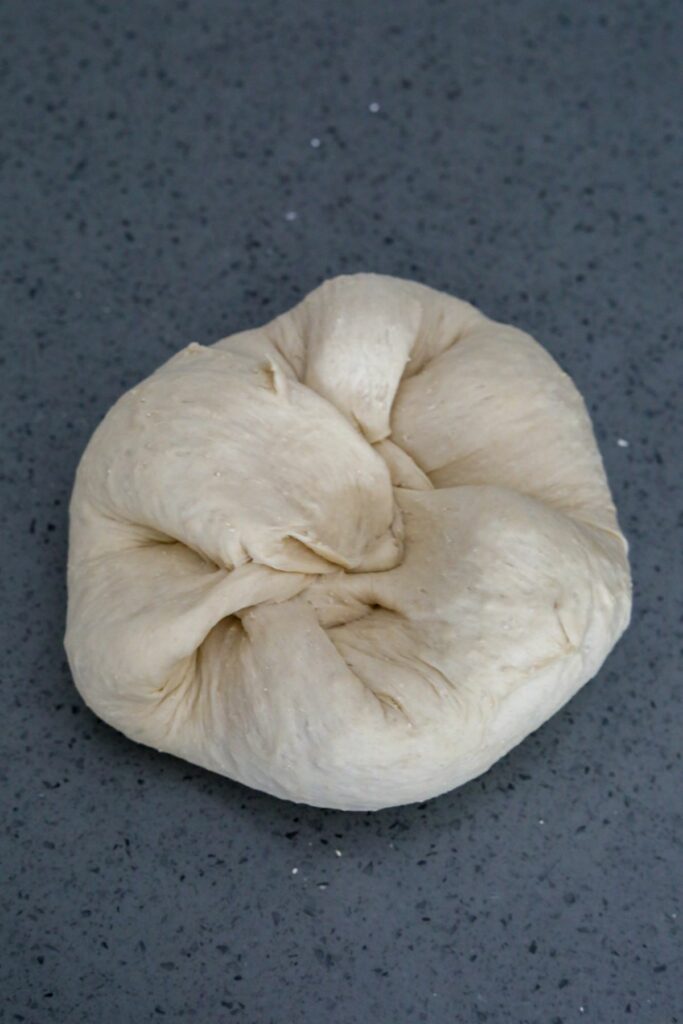
-
Save
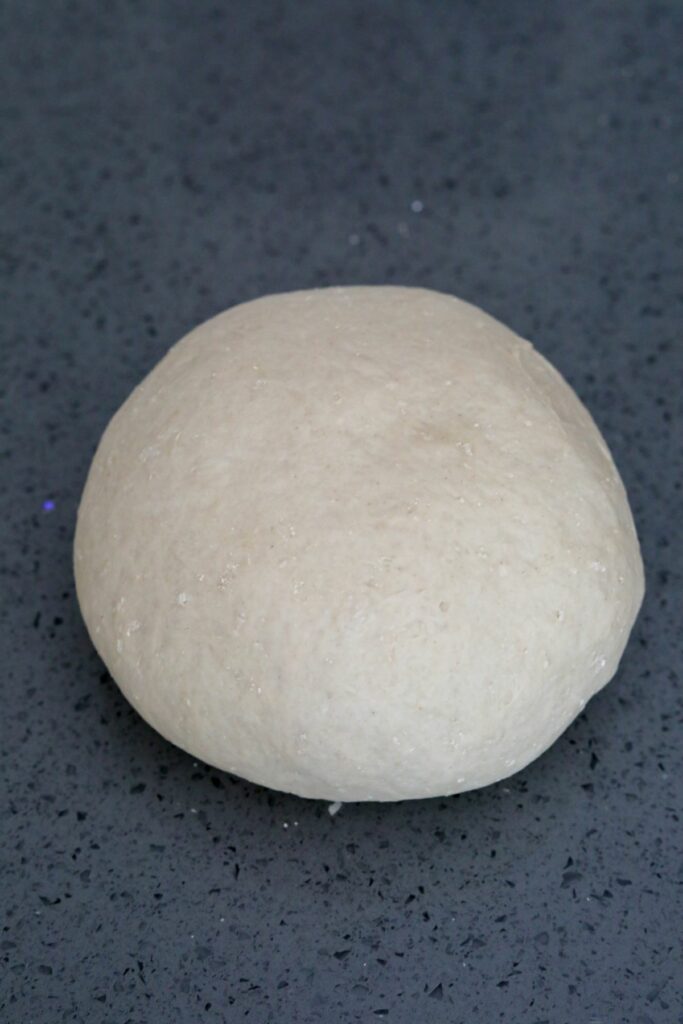
-
Save
Using a proofing basket
By using a proofing you will be able to get the nice round shape that you want. It is important that the proofing basket is well floured. The dough will want to spread into the seams and this could cause it to stick to the basket. Dusting the top and sides of the ball will help keep the cling wrap from sticking to the dough. Once it has doubled in size again you are ready to bake.
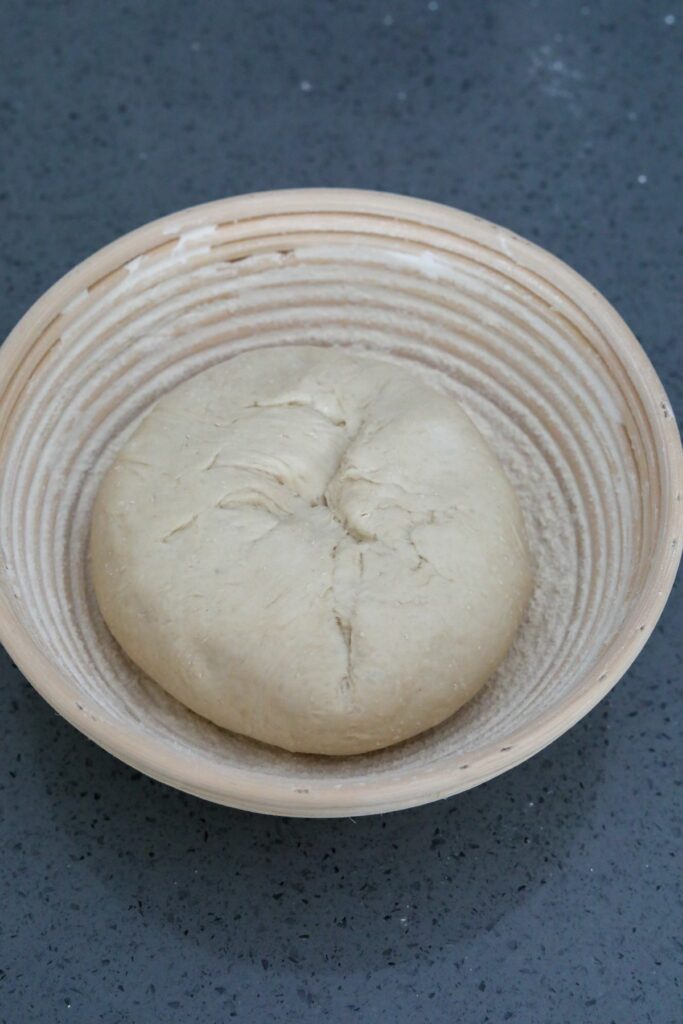
-
Save
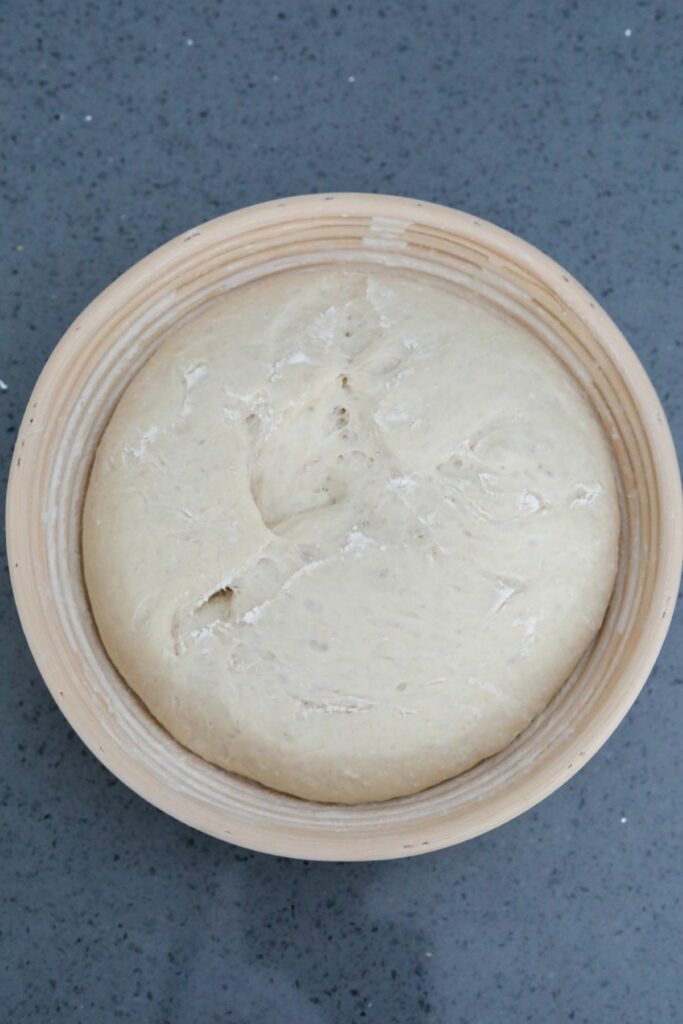
-
Save
Slash and bake
The first thing that you want to do is use a fresh razor or very sharp knife to cut into the top of the dough. This will allow for all of the water to escape from the slashes instead of bursting from another part of the loaf allowing you to control the shape of the rise. A Dutch oven will help keep the water inside and develop the nice crust. If you tap the bottom of the loaf of bread it should sound hollow. That is a great indication that it is done.
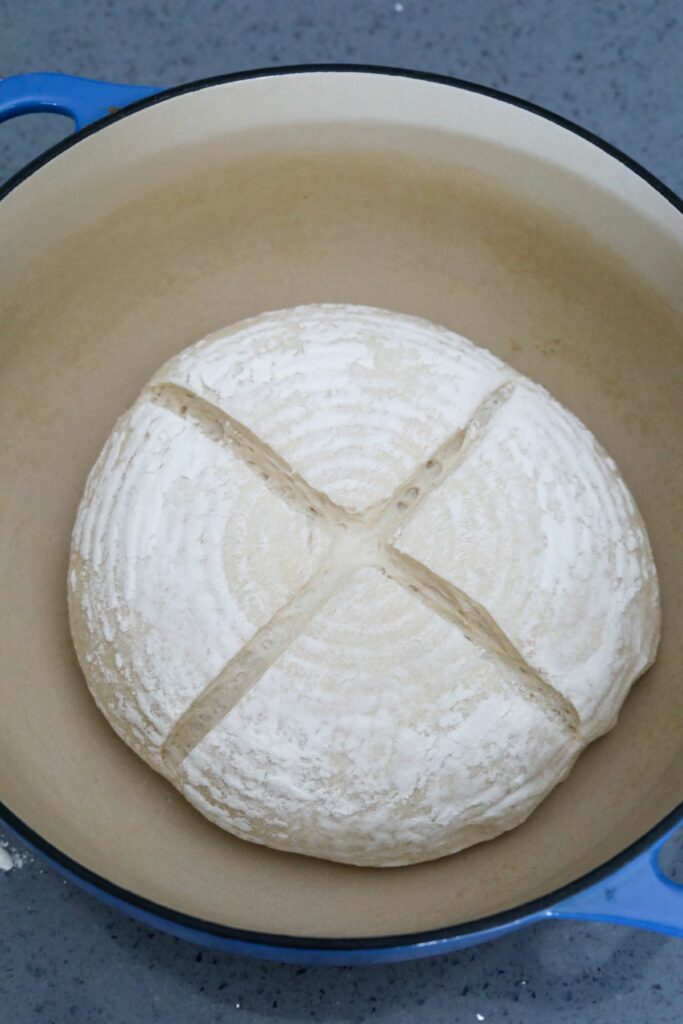
-
Save
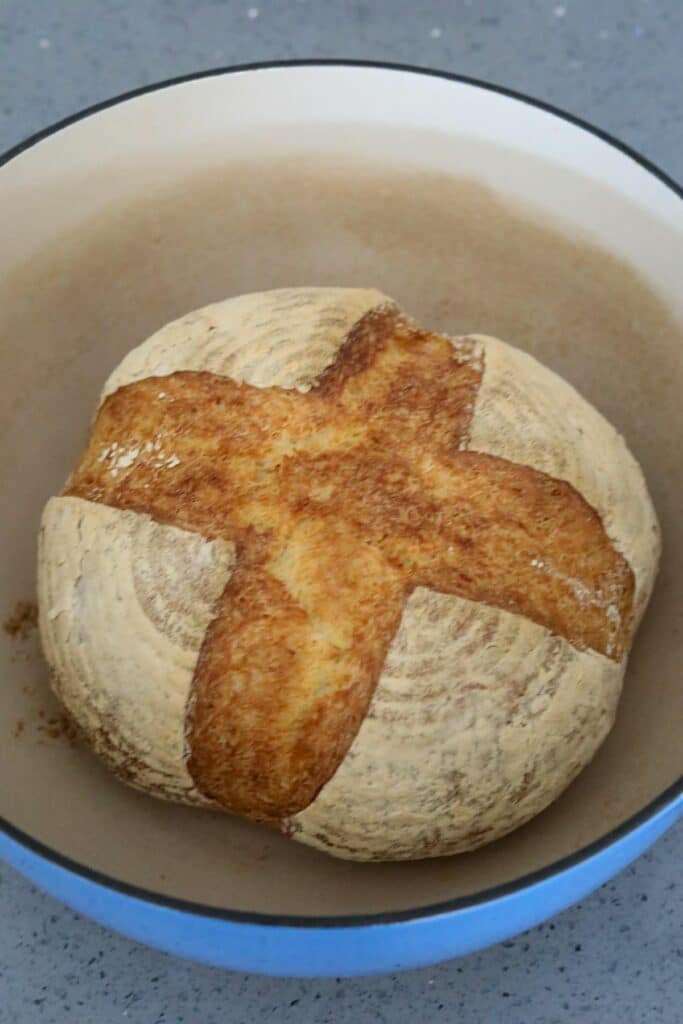
-
Save
Cool the crusty French loaf
Once the bread is baked let it cool completely this is very important. While it is nice to have warm bread if you slice it before it cools then the inside crumb can ball up and become gummy, doughy or sticky in texture. It will also allow for further flavor development. While it is cooling you might hear loud cracks and snaps. This is the crumb, the inside, contracting and pulling on the crust causing it to crack. This is a good thing and you know you cooked a great loaf.
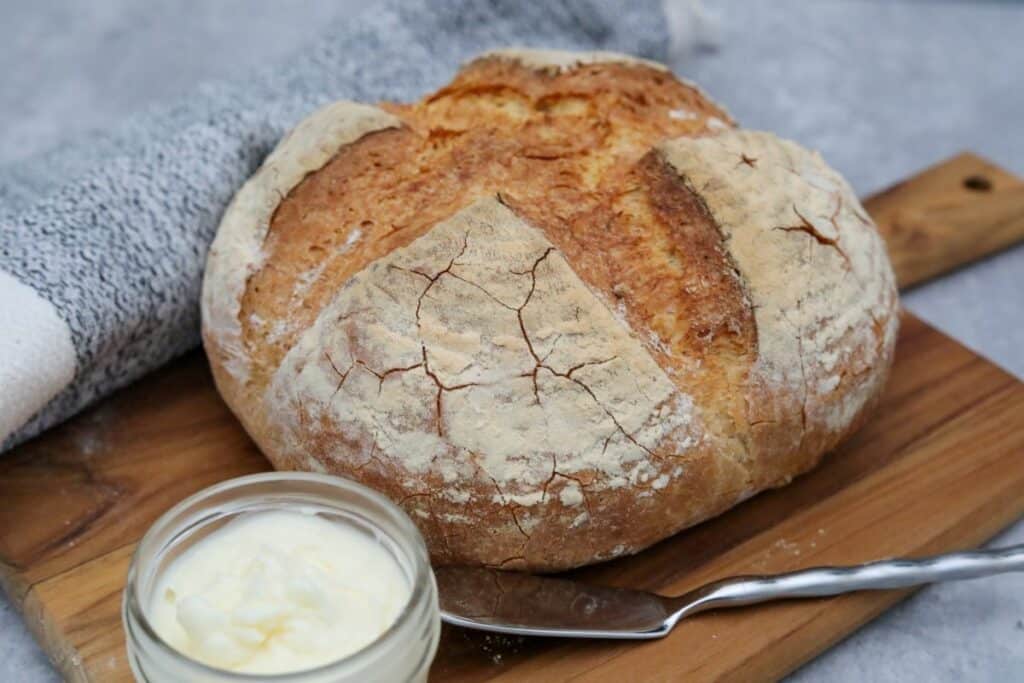
-
Save
Looking for other bread recipes?
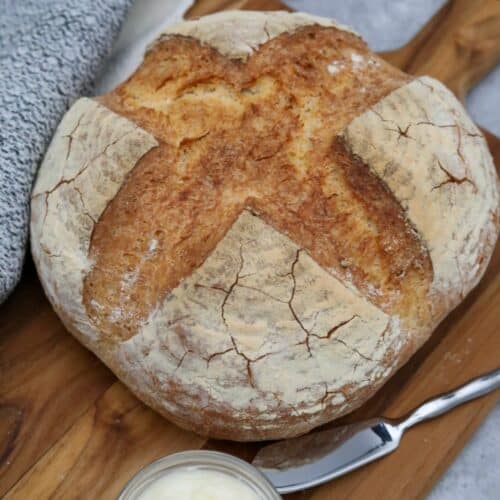
-
Save
Rustic Crusty French Bread
Equipment
- Stand mixer with dough hook
- Banneton proofing basket
- Dutch oven
- Cooling rack
Ingredients
- 3½ cups bread flour
- 1¼ cups water warm
- ½ tsp salt
- 2¼ tsp active dry yeast 1 packet
Instructions
- In your stand mixer or large bowl add the flour, yeast, salt and mix thoroughly. Add the water and on a medium-low speed use the dough hook until the ball pulls away from the sides. The dough should be smooth and elastic.
- Cover the dough and let rest for 1 hour or until it doubles in size.
- Pour out the dough onto a lightly dusted surface. Starting with one edge stretch and pull it back to the center and press down. Rotate a little repeat the same action. Once you have done this around the entire ball flip it over.
- Pull the ball towards your body about 2 inches, rotate 90 degrees and repeat. Flour the top of the ball and place in a clean bowl or floured proofing basket. Cover and let rise for another 30 min.
- While the dough is resting heat the oven to 425°F or gas mark 7 and place Dutch oven into the cold oven to heat.
- Once the oven has heated remove the Dutch oven and add the dough seam side down. Bake for 30 min covered, remove the lid and bake uncovered unto golden brown.
- Remove from the oven and place on a cooling rack.
Nutrition
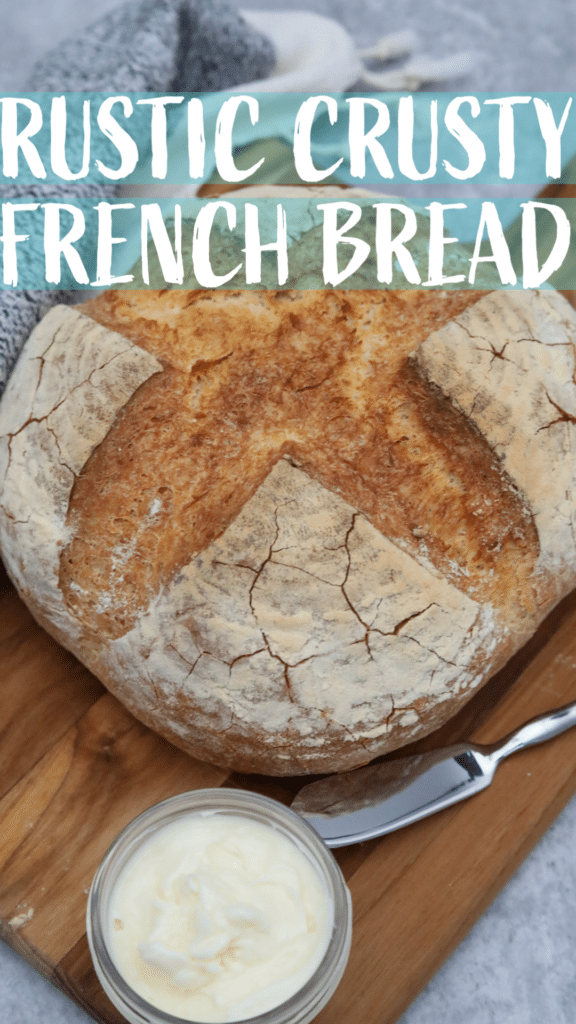
-
Save
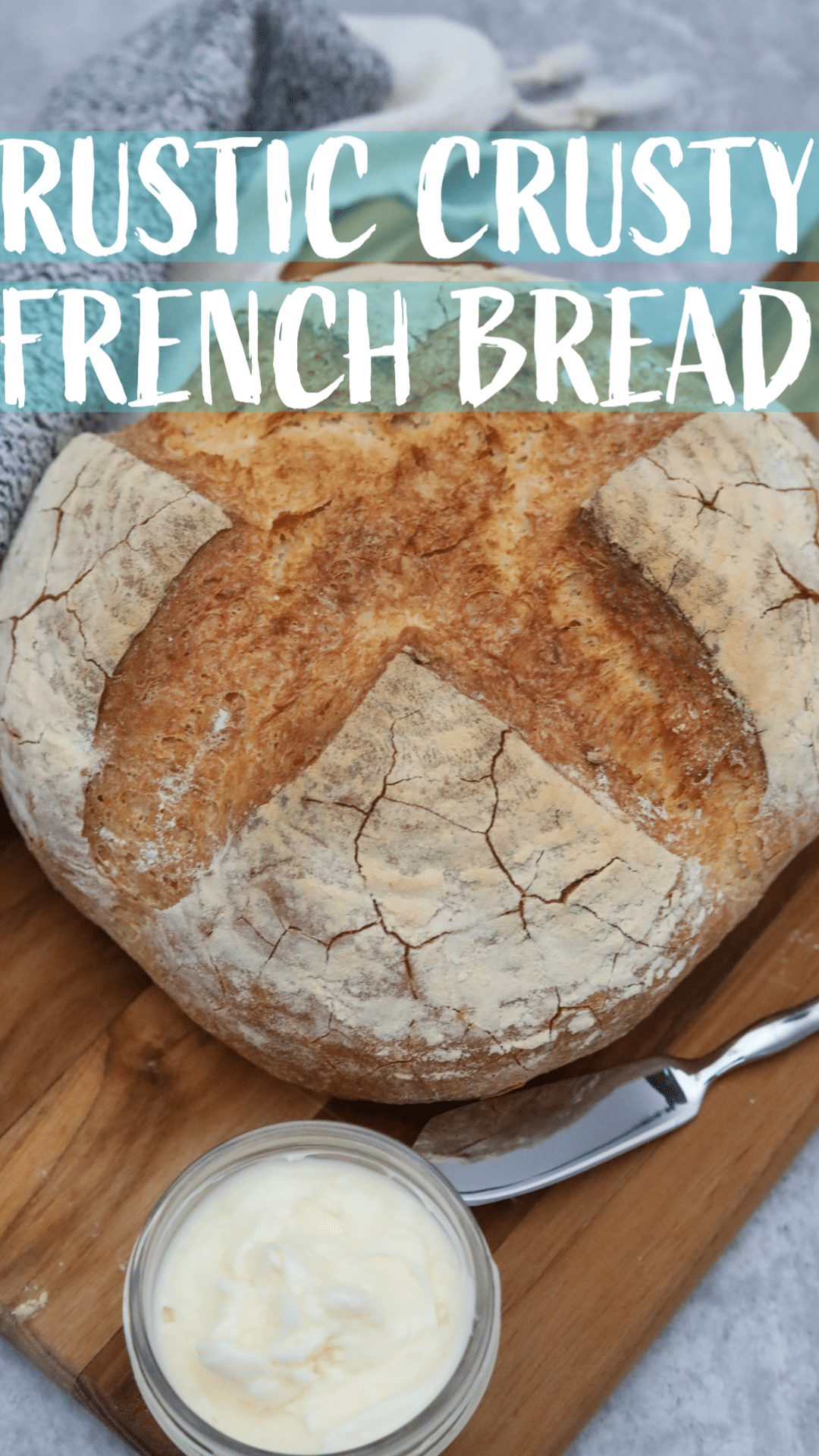
-
Save

